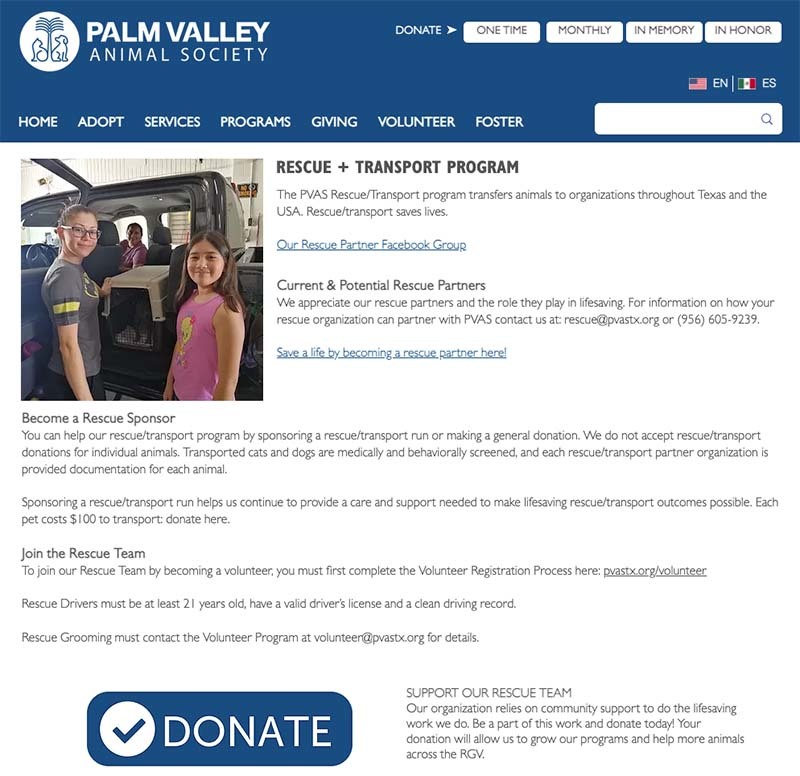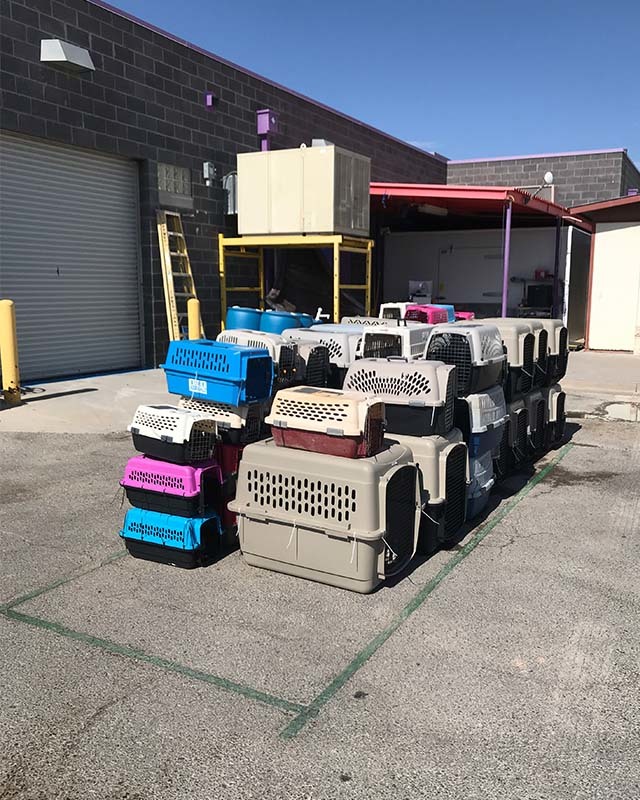This is part one of a two-part blog on building and maintaining successful transport partnerships. This blog is focused on tips for source shelters—part two focuses on tips for destination shelters.
Whether you’re just starting a transport program or have been transporting for years, there’s always room to grow and maximize your lifesaving impact. Here's the top 10 tips all source shelters should know for successful transfer partnerships.
Since you’re frequently networking with out-of-state organizations, your partners most likely don’t know what a typical day is like at your shelter. Share all your data from intakes to all animals who were euthanized or died in care to really highlight the needs and demonstrate the impact the partnership is having.
Be honest about your biggest needs and how transport partners can help. Take videos, send photos, and do virtual walkthroughs to help partners gain a real-life sense of the urgency for the dogs and cats in your care who need rescue placement.
Here’s a great example of a live video from the Humane Society of Harlingen, that helps people visualize the reality of the shelter and how impactful getting animals to safety is without your partners physically being there.
We mean this literally and figuratively! Historically, transport partnerships have been inequitable. Source shelters are often responsible for the fundraising, vetting, and transport costs of the animals without receiving any support from the destination shelter.
To break this cycle and to create more equitable partnerships, it’s important to advocate for what your organization can realistically accomplish. Ask your partners to help contribute to the cost of transport and vetting, and to meet you halfway between the shelters to cut down on drive time.
Don’t feel bad for being honest about your organization’s capabilities, and what you can and cannot do.
It seems so simple, but a great photo or video can truly be the make or break of getting animals out of a shelter alive. Take the time to ensure that you’re putting each dog and cat’s best face forward to your destination partners with a quality photo. A good photo and/or video can help your destination partners find a foster or adopter faster which can result in more lives saved.
No professional cameras are needed, a phone will do just fine! Consider recruiting your very own volunteer “Furtographers” like Dallas Animal Services did here.
Want tips for photographing animals? Visit HeARTsSpeak.org for all kinds of pro tips for the not so pro pet-ographers.
Remember that transport is one of many lifesaving tools at your disposal. It’s easy to get excited about transport and forget about the many willing fosters, adopters, and rescue partners in your own backyard.
Exhaust all local options before planning a transport for the most sustainable long-term approach. Acadiana Animal Aid does a great job at celebrating their adoptions from transport, while encouraging local adoptions at the same time.
You will have the biggest impact when you have multiple levers to pull in times of a space crisis.
One of the biggest pain points with transport partnerships is slow responsiveness. Too often transports are held up because of a delay in getting information (for example, a pet’s age, test results, etc) from the source shelter.
Analyze your processes to see how you can speed up the flow of information. Consider creating a rescue page like the one Palm Valley Animal Society uses, so your partners are able to get many of their questions answered on their own and can view the dogs and cats with urgent placement needs.

In shelters, every minute counts. When you provide as much info as possible and in a clear, concise manner, transports run smoothly.
Consider using a shared live Google sheet so that you and your rescue partner can view the information updates in real time. It is a great way to streamline information, particularly if balancing multiple destination partners. Consider using this Sample Transport Roster we created and customize it to fit your needs.
Many scenarios can be avoided simply by organizing, such as delays due to pet mix-ups, confusion over paperwork, and problems loading certain pets. Use a transport checklist and recruit volunteers that can assist you in transport preparation.
Always label every kennel with animal name/ID (duct tape kennel labels work just fine)! Triple check your medical records and health certificates, send a copy of the paperwork to your partner so they have it before arrival, and map out your transport vehicle before you load. We love this staging technique of a virtual plane to visualize available space from El Paso Animal Services (pictured below).

Recruiting foster parents who can hold dogs until the transport date has so many benefits! You’re able to attract more fosters, as requiring only a short commitment lowers the bar for fostering and makes it easy for more people to try. In return, your shelter learns a ton of information about the pet that will help them get adopted at their destination even faster, and you open up valuable kennel space for others in need!
Check out this adorable El Paso Transport Foster promotion.
You have to put your organization out there to find rescue partners, and networking is key. If you reach out to an organization that’s not accepting new transports, instead of giving up, ask for recommendations for partners they can connect you with. Reaching out personally is usually most effective.
We understand the urgency and life and death decisions that are made daily in source shelters. In this rush to get animals out of your shelter, it’s always important to remember that it’s not just about getting animals out on transport this week, but how many partners you can rely on for support several months from now.
Providing full transparency and disclosure on the medical and behavior conditions of the animals you’re sending out is one of the primary ways you can strengthen your partnerships. By checking in with your partners frequently, and assessing your program on ways to improve, you will build long lasting partnerships that will save many more lives for years to come.